ASRS 2022 recap: Significant strides in DME, AMD discussed among retina specialists
The American Society of Retina Specialists held its 40th Annual Meeting in New York, New York, from July 13-16, 2022. While data was presented for all topics in retina, new revelations in age-related macular degeneration, diabetic retinopathy, and diabetic macular edema dominated the conversation.
Imaging
The relationship between outer retinal integrity, subretinal fluid may affect treatment outcomes
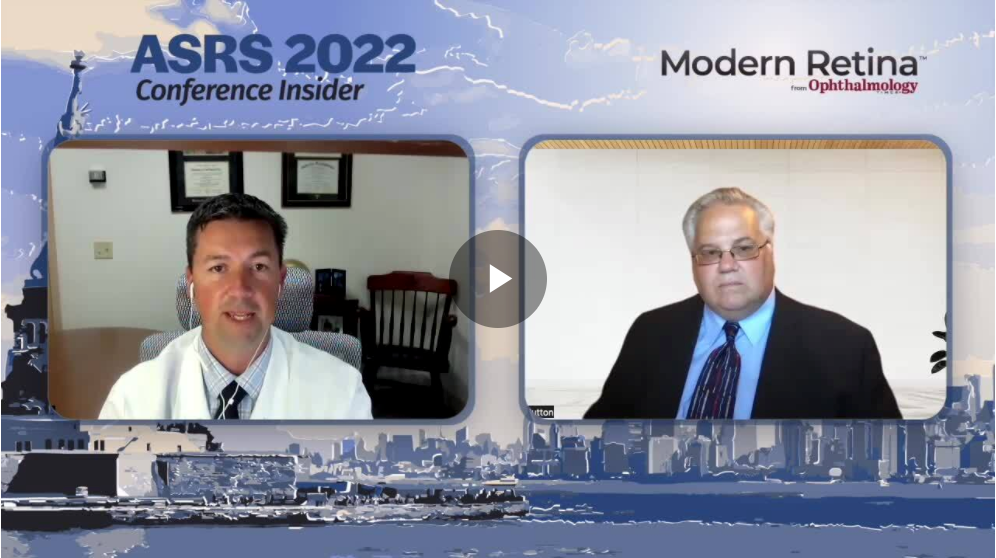
Justis Ehlers, MD, presented a talk entitled, “Higher Order OCT Feature Assessments of the Impact of Fluid Dynamics on Visual Acuity in Neovascular AMD in a Phase III Clinical Trial: The Importance of Outer Retinal Integrity.” Here he discusses the findings.
AMD
TRUCKEE study: Real-world safety and efficacy of faricimab for neovascular AMD
Carl Danzig, MD, and colleagues reported that treatment with faricimab (Vabysmo, Roche) in patients with neovascular age-related macular degeneration (AMD) achieved improvements in the visual acuity (VA), central subfield thickness (CST), and pigment epithelial detachments (PEDs).
This is encouraging because the ongoing TRUCKEE study population is comprised of patients who require frequent injections to address persistent disease activity associated with neovascular AMD.
The investigators analyzed the patient demographic data, the previous treatment history, efficacy, and safety of patients treatment with faricimab who had in most cases been treated with another drug for neovascular AMD.
The patients were about a mean of 80 years of age and had been treated previously with aflibercept (Eylea, Regeneron Pharmaceuticals) in more than half of cases, followed by ranibizumab (Lucentis, Genentech), and brolucizumab (Beovu, Novartis). About 15% were treatment naïve. In most cases aflibercept was the last previous treatment.
DAVIO trial: 12-month results show favorable safety profile, reduced treatment burden in patients with nAMD

Rishi Singh, MD, presented, “12-Month Results of EYP-1901 Vorolanib in a Bioerodible Durasert Insert for nAMD: The DAVIO Trial.” The Phase 1 trial showed a reduction in treatment burden over 12 months as well as a favorable safety profile.
TOWER study: A new index to measure retinal fluid fluctuations in the retina in wet AMD
Investigators from Thailand led by Yodpong Chantarasorn, MD, who is from the Department of Ophthalmology, Vajira Hospital, Navamindradhirajh University, Bangkok, took a close look at retinal fluid fluctuations in Thai patients with wet age-related macular degeneration (AMD) and devised a better way to measure the fluctuations in the central subfield thickness (CST).
Until now, there has been no adequate way to measure fluid fluctuations in the eye via imaging. This is important because variations in the foveal thickness during treatment with anti-vascular endothelial growth factor (VEGF) drugs can lead to worse structural/functional outcomes in affected patients. The currently used method, which provides the standard deviation of the magnitude of the variations in the foveal thickness, may not represent the CST fluctuations, the authors suggested.
Metformin may have a protective effect against AMD
A frequently prescribed drug to treat diabetes, metformin, may have the potential to be a novel therapy for age-related macular degeneration (AMD), reported Dimitra Skondra MD, PhD. She is Associate Professor of Ophthalmology and Visual Science, and Director of the J. Terry Ernest Ocular Imaging Center, Founder/Leader, Retina Microbiome Team, Vitreoretinal Service, The University of Chicago.
This protective effect is known to be present against other age-associated diseases, but the importance of such a finding in diabetes cannot be over-emphasized.
She and her colleagues conducted a retrospective case-control study to take a close look at the the relationship betweenmetformin and other antidiabetic medications in patients with AMD. The authors used a large health insurance claims database to identify patients who had been newly diagnosed with AMD between January 2008 and December 2017.
Diabetic Eye Disease
Delving into the 24-week results for UBX1325 for the treatment of chronic DME, wet AMD
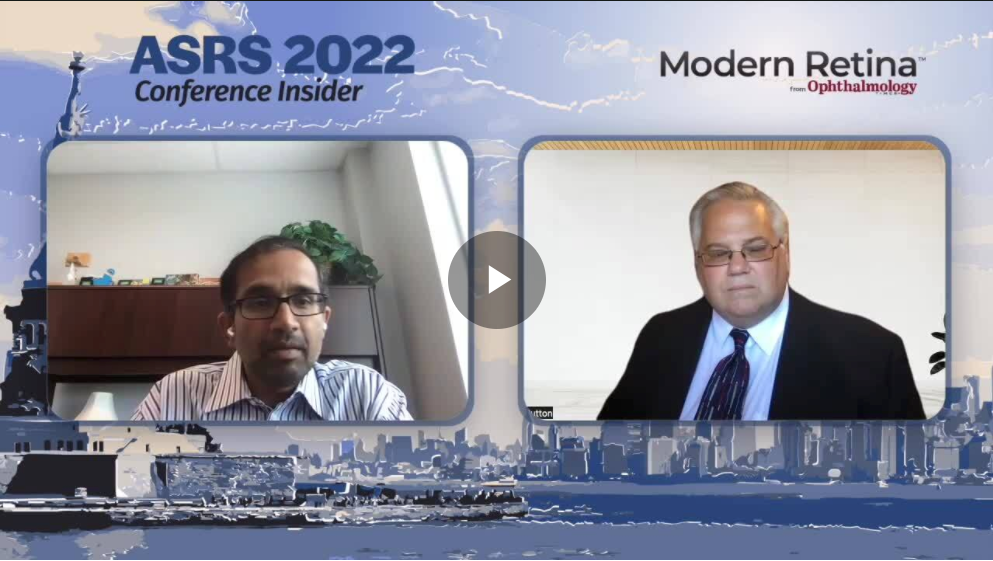
At ASRS 2022, Raj K. Maturi, MD, presented a talk entitled, “UBX1325, A Novel Senolytic Therapy for Treatment- Experienced Patients With Chronic DME or Wet AMD: 24-Week Results of a Phase 1 Study.”
Elevated albumin to creatinine ratio associated with central subfield thickness fluctuations in patients with DME
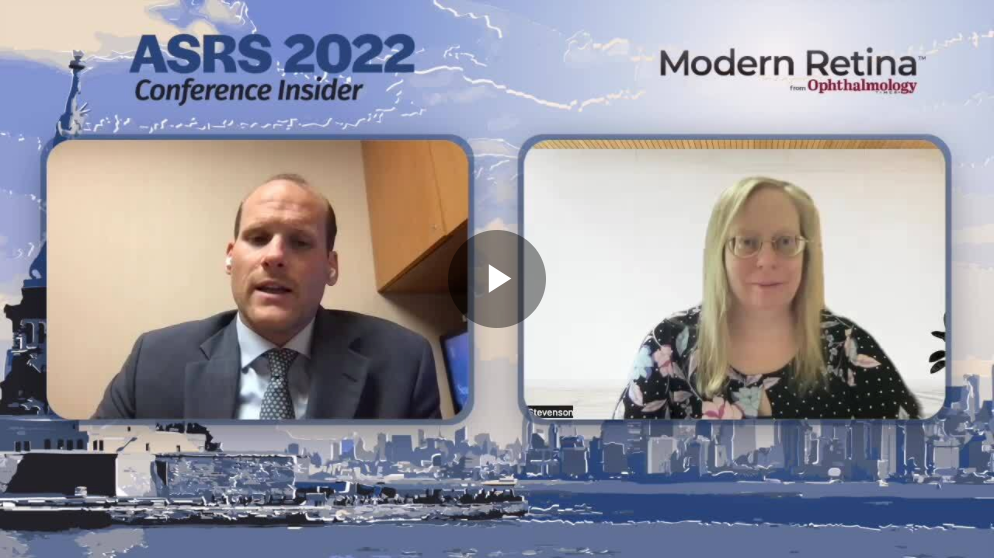
Matthew Starr, MD, presented, “Factors Associated With Fluctuations in Central Subfield Thickness in Patients With Diabetic Macular Edema Using 2 Clinical Trial Databases.”
KALAHARI study: Phase 2 early results indicate alternative treatment pathway for patients with DME is effective, durable
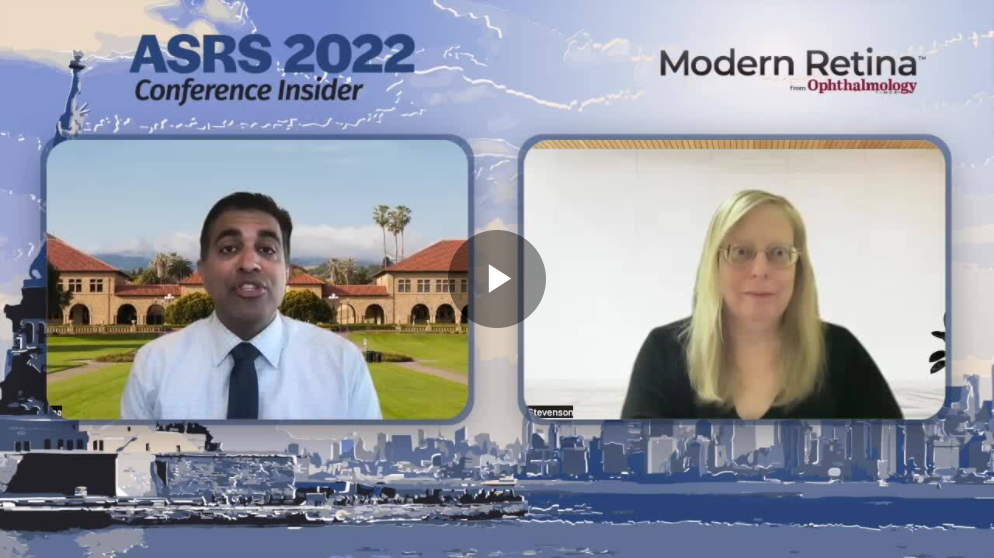
Rahul Khurana, MD, discusses his 2022 ASRS talk, “Phase 2 Study of THR-149, a Plasma Kallikrein Inhibitor in Patients With DME Who Respond Suboptimally to Anti-VEGF Treatment (Month 6 Results of Part A of the KALAHARI Study),” which he presented in New York City, New York.
New tool emerges for predicting the risk of vision loss from diabetic retinopathy
Investigators from the from Kaiser Permanente Southern California’s Eye Monitoring Center and Department of Research and Evaluation, reported the accuracy of a new tool for predicting the 3-year risk of vision-threatening diabetic retinopathy (VTDR) in patients with type 2 diabetes mellitus. Bobeck Modjtahedi, MD, the lead author of the study, reported that the future risk of the development of new-onset VTDR, diabetic macular edema (DME), and proliferative DR (PDR) can be predicted using the patient’s retinopathy status and hemoglobin A1c value.
The researchers believe that this tool will prove to be valuable for more targeted monitoring and treatment intervention into patients with type 2 diabetes with the goal of preventing vision loss.
DME: Faricimab remains durable, effective in 2-year results of YOSEMITE and RHINE trials
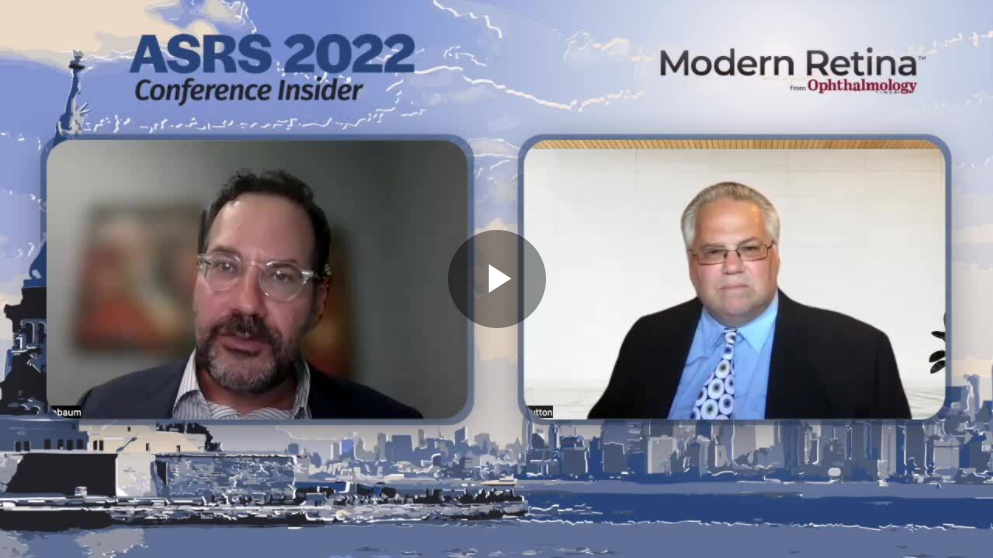
David Eichenbaum, MD, presented “Efficacy, Durability, and Safety of Faricimab in Diabetic Macular Edema: 2-year Results on the Phase 3 YOSEMITE and RHINE Trials.”
Retinal Surgery
Wide-field color photograph of progressive symptomatic retinal detachment complicating degenerative retinoschisis. The white arrow to the right depicts the limit of the degenerative retinoschisis, the 2 white arrows to the left depict the limit of the progressive symptomatic retinal detachment. (Figure courtesy of Andres F. Lasave, MD)
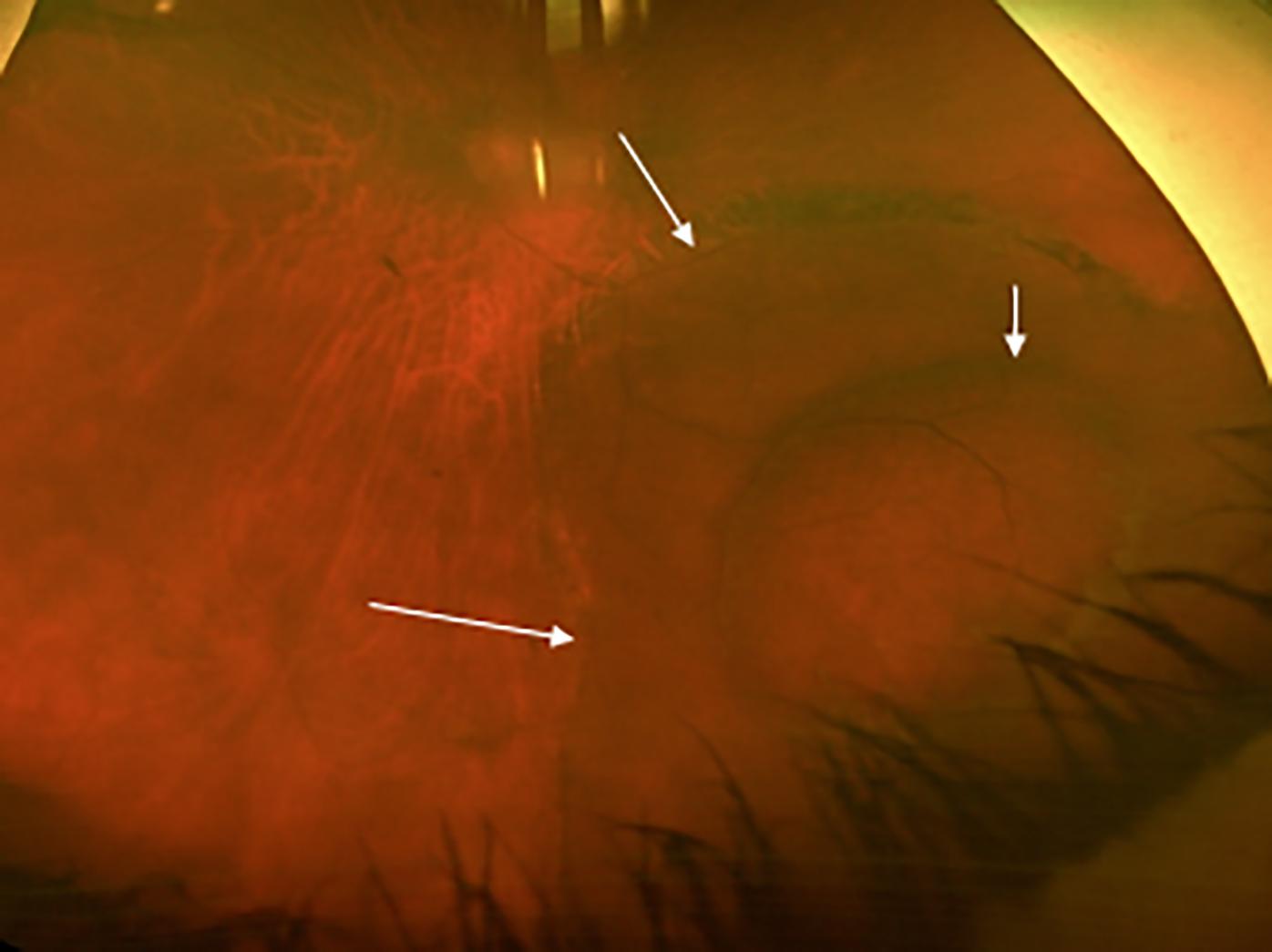
Progressive symptomatic retinal detachment complicating degenerative retinoschisis (PSRSCR) is a rare complication of degenerative retinoschisis, but the treatment success rate following a single surgery is low compared with uncomplicated rhegmatogenous RDs.
J. Fernando Arevalo, MD, PhD, The Edmund F. and Virginia B. Ball Professor of Ophthalmology Chairman of Ophthalmology at Johns Hopkins Bayview Medical Center, Wilmer Eye Institute, Johns Hopkins University, Baltimore, investigated the anatomic and functional outcomes of pars plana vitrectomy (PPV), scleral buckle (SB), or a combination of the two, and suggested that the combination approach may need further consideration.
He explained that while progressive RDs that are secondary to degenerative retinoschisis can be asymptomatic in most patients, in the cases in which the RDs develop within the schisis, there is the potential for the RD to progress past the borders of the schisis and become symptomatic.
In the cases with limited progression, SB works well; but in more extensive cases the optimal surgical approach is not yet established, he explained.
Pediatric retinal detachment surgery in the US: Primary scleral buckling achieved best visual acuity
Yoshihiro Yonekawa, MD, from the Wills Eye Hospital, Mid Atlantic Retina, Sidney Kimmel Medical College of Thomas Jefferson University, Philadelphia, and colleagues took a look at retinal detachments in pediatric patients to get a broad view on the status of treatment on a national level.
The goals of this multicenter cohort study were to determine the demographics of retinal detachment in children in the US and report the treatment modalities and visual outcomes, according to Dr. Yonekawa.
The investigators examined the aggregated electronic health records of all identified children who ranged in age from 1 to 17 years between January 2015 and August 2021 in a national database. All children had a rhegmatogenous retinal detachment (RRD) based on the ICD10 and CPT codes. The investigators then analyzed the demographic data, comorbidities, visual acuity (VA) levels, and treatment modalities.
Uveitis
PEACHTREE post hoc analysis: Significant reduction of macular edema, low rate of rescue in patients with chronic uveitis
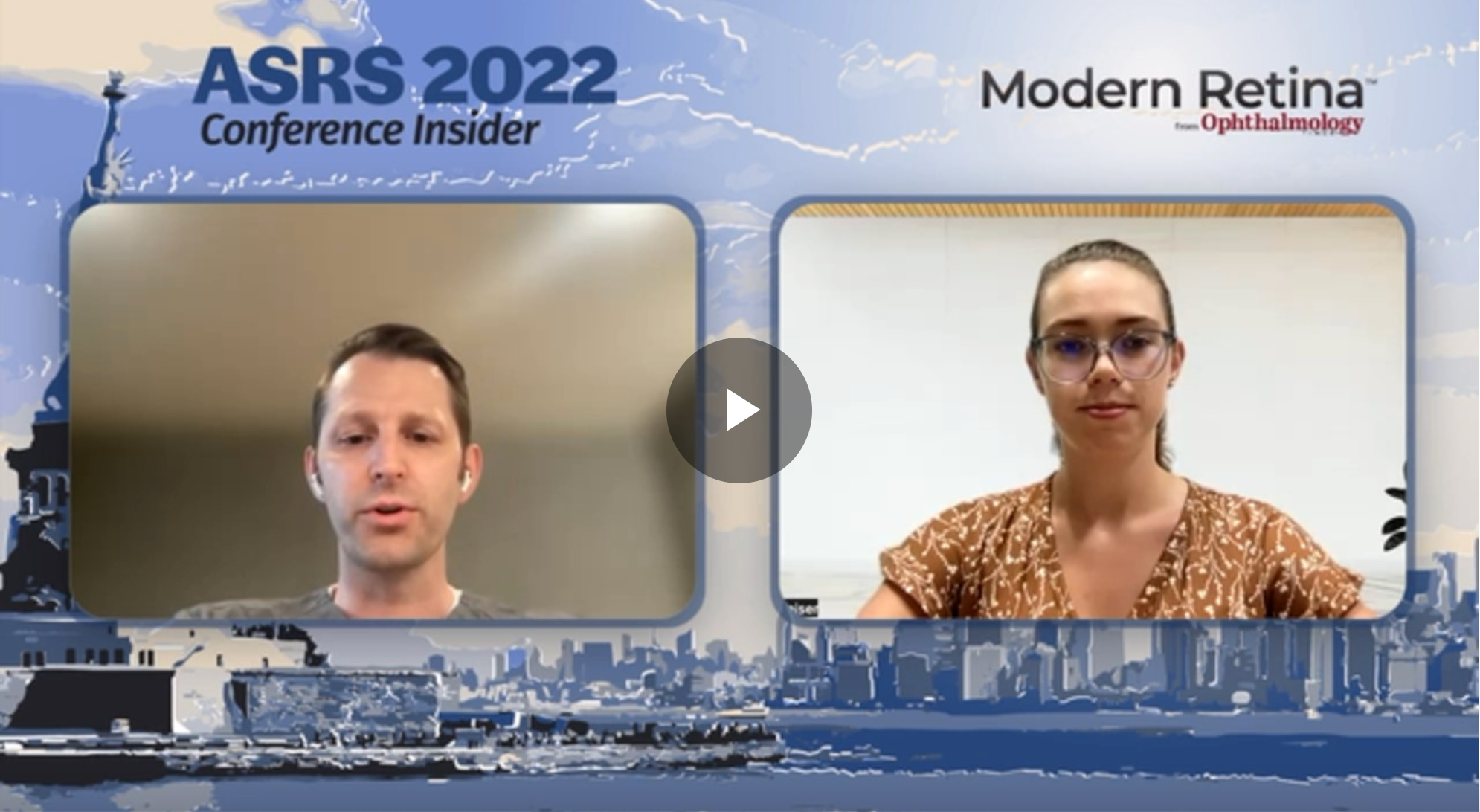
Christopher Henry, MD, presented a talk entitled, “Efficacy of Suprachoroidal Triamcinolone Acetonide Injectable Suspension in the Treatment of Macular Edema in Patients With Chronic Uveitis,” at ASRS 2022 in New York City, New York.
Newsletter
Keep your retina practice on the forefront—subscribe for expert analysis and emerging trends in retinal disease management.